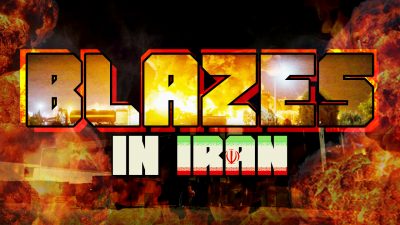Video: Fires and Explosions in Iran. Hopes for Nuclear Deal Rescue Flicker

All Global Research articles can be read in 51 languages by activating the “Translate Website” drop down menu on the top banner of our home page (Desktop version).
Visit and follow us on Instagram at @crg_globalresearch.
***
In Iran, the beginning of June has been marked by a “pandemic” of fires in various locations.
On June 6th and 7th, two separate fires took place in the Islamic republic, with one happening near Tehran and the second in the central Kerman province.
The first fire took place in the city of Zarand in Kerman, at a steel factory.
The accident reportedly occurred due to the spillage of molten material.
In spite of ample evidence in videos and eyewitness reports to the contrary, authorities said that there had been no explosion.
According to local sources the explosion was so strong that people in villages and surrounding regions of Zarand were jolted.
There is also some speculation that it was somehow expected with personnel being evacuated hours earlier.
Less than a day later, a massive fire broke out at the Behnoush soft drink factory which is located to the west of Tehran.
The fire had started in an open-air storage area where flammable materials were stored.
No casualties were reported as a result of the fire.
Both fires were ruled as accidents, and it is a likely scenario as temperatures in Iran are quite high at the moment.
On June 2nd, a massive fire had broken out at the Shahid Tondgooyan refinery in Shahr-e-Rey, south of the capital Tehran, state media reported.
Hours before the incident in Shahr-e-Rey, the largest ship in the Iranian navy caught fire and later sank in the Gulf of Oman under unclear circumstances.
There is room to speculate, however, over the last few months, fires erupted in several military and industrial facilities across Iran.
Despite being dubbed as accidents, and keeping in mind the climate, the frequency of these fires could potentially suggest some were not accidental.
Separately, hopes are high in Iran, as months of negotiations on the Nuclear Deal have come to a close as representatives of all signatories have returned to their respective capitals to discuss further steps.
Abbas Araghchi, the Iranian top nuclear negotiator, said that good progress has been made in this round of talks, but there are still disagreements on key issues.
Additionally, Iran’s foreign minister Javad Zarif said that full compliance by the US to the deal needs to be resumed so that actual progress can be made.
However, US secretary of state Antony Blinken has one more time admitted that he was unsure whether or not Tehran was interested in rejoining the deal.
Negotiators have produced at least 20 pages of text with various options on how to solve the remaining hurdles.
Many points were made in regard to the lifting of sanctions, the limited use of centrifuges and more and it is expected that negotiations will continue in the following months.
*
Note to readers: Please click the share buttons above or below. Follow us on Instagram, @crg_globalresearch. Forward this article to your email lists. Crosspost on your blog site, internet forums. etc.
SUPPORT SOUTHFRONT:
PayPal: [email protected], http://southfront.org/donate/ or via: https://www.patreon.com/southfront
The Globalization of War: America’s “Long War” against Humanity
Michel Chossudovsky
The “globalization of war” is a hegemonic project. Major military and covert intelligence operations are being undertaken simultaneously in the Middle East, Eastern Europe, sub-Saharan Africa, Central Asia and the Far East. The U.S. military agenda combines both major theater operations as well as covert actions geared towards destabilizing sovereign states.
- ISBN Number: 978-0-9737147-6-0
- Year: 2015
- Pages: 240 Pages
List Price: $22.95


